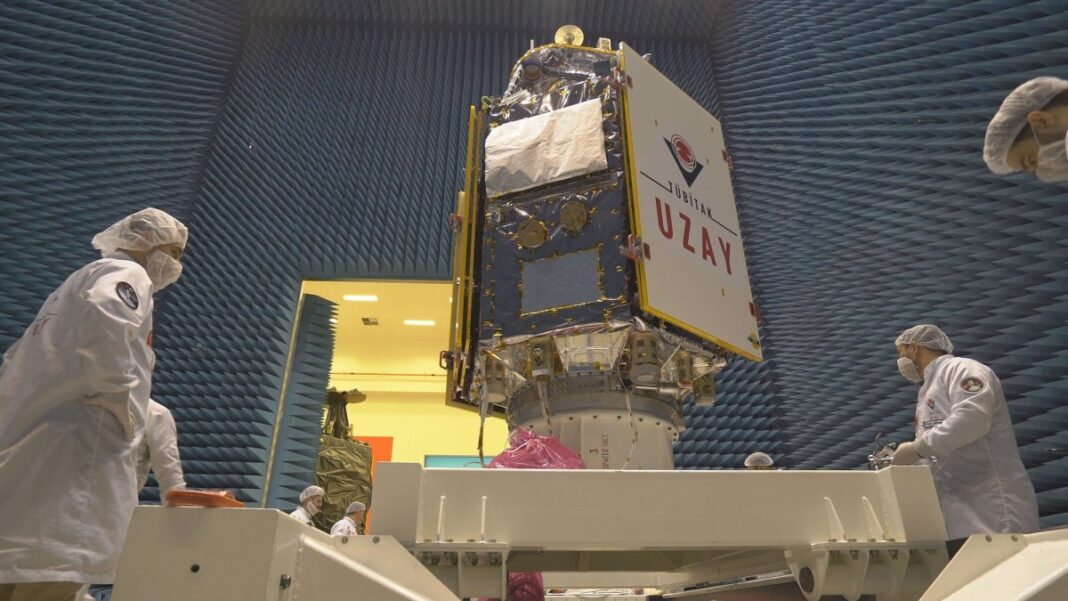As Türkiye’s first domestically produced high-resolution Earth observation satellite marks its second year in orbit, preparations are underway to launch its successors within the next three years, Industry and Technology Ministry said on Tuesday.
IMECE, featuring sub-meter resolution, was launched in mid-April 2023 aboard a SpaceX Falcon 9 rocket from Vandenberg Space Force Base in California. It is operating in low Earth orbit to support Türkiye’s strategic objectives in satellite imaging and observation.
“Our eye in space turns two,” Industry and Technology Minister Mehmet Fatih Kacır said on Tuesday.
“Through our investments in satellite technologies, we have elevated our country to a level where we can develop, test, and produce our own communication and imaging satellites. Guided by our National Space Program, we aim to make Türkiye one of the leading countries in space,” Kacır wrote on social media platform X.

Developed by TÜBITAK Space Technologies Research Institute (TÜBITAK UZAY), IMECE features more than 90% domestically sourced components. These include a high-resolution electro-optical camera, a flight computer, an electric propulsion system, and key communication subsystems.
IMECE is projected for use in many areas, especially in national defense, disaster management, agriculture, forestry, the environment, and urbanization.
The satellite is capable of imaging a swath 16.7 kilometers wide and up to 1,000 kilometers in length in a single pass. With a data transmission rate of 320 megabits per second, IMECE efficiently relays high-resolution imagery to ground stations.
“We continue to leave a mark to assert our presence in space,” Abdulkadir Uraloğlu, the transport and infrastructure minister, wrote on X.
The satellite’s launch was part of Türkiye’s ambitious 10-year space road map, unveiled in February 2021. The program includes missions to the moon and developing internationally viable satellite systems.
Türkiye realized its first manned space travel last year, during which it also launched its first indigenous communications satellite, Türksat 6A, into orbit.
Türkiye aims to build on the knowledge gained, the systems developed, and the skilled workforce trained during the IMECE project as it works on next-generation satellite constellation projects.
Works are underway for IMECE-2 and IMECE-3, which are being designed to operate in an integrated constellation and are expected to be completed and operational by 2027 and 2028, Industry and Technology Ministry said.
“The engineering expertise, advanced subsystems, and skilled workforce cultivated through the IMECE project have propelled Türkiye’s advancements in the field of space technologies,” the ministry stated.
“Building on this foundation, the IMECE-2 and IMECE-3 projects for next-generation satellite clusters designed to work in an integrated manner have been launched,” it noted.
“These satellites are planned to be completed and begin their missions in orbit in 2027 and 2028, respectively.”






